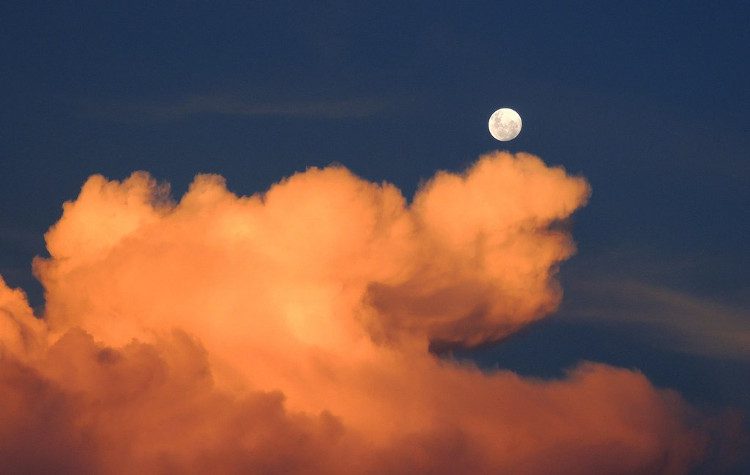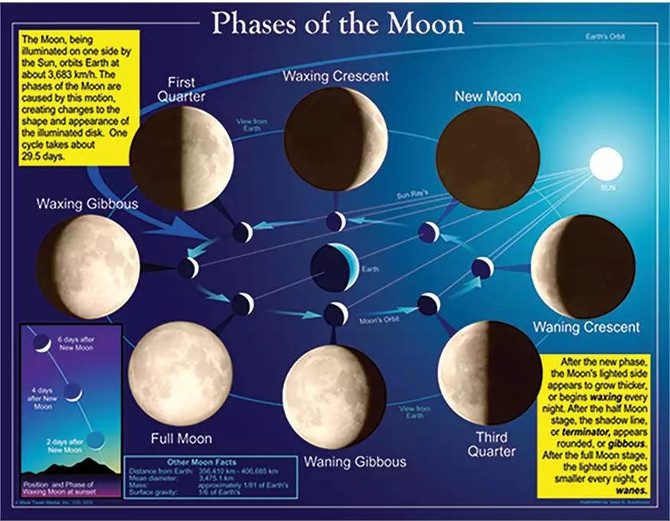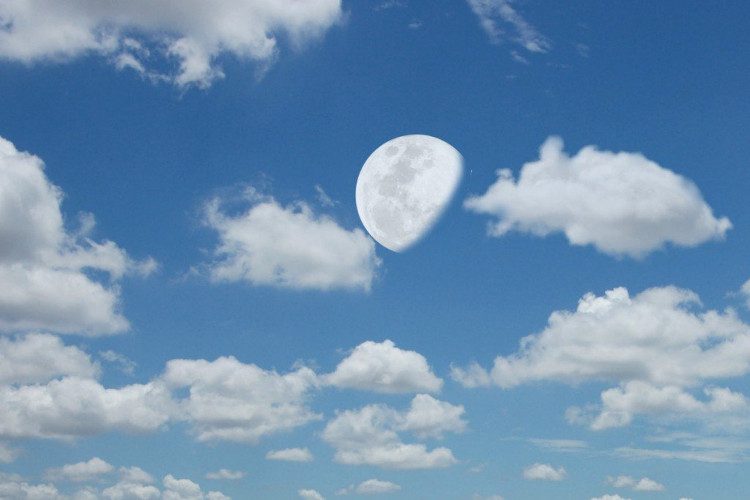Typically, we cannot see the Moon or stars during the day. However, there are days when you can spot the Moon “displaying” in the sky at the same time as the Sun. Let’s explore this unique phenomenon in the following article.
As you may know, we cannot see the stars during the day. The primary reason for this phenomenon is that the intense brightness of the Sun in the sky obscures the faint glow of the stars. Science enthusiasts will go further to explain that, in fact, the stars seem to disappear because the Earth’s atmosphere scatters sunlight that reaches our planet.
As for the special star that is Earth’s natural satellite, there are two reasons it can be seen clearly during the day: the Moon is bright enough for you to see it against the bright blue sky and there are times when the Moon is above the horizon at the same time as the Sun.

The Moon does not emit its own light; it only reflects sunlight to illuminate the Earth’s sky at night. (Image: Science ABC).
The Moon is Bright Enough to Exist in Daylight
You may know this or not, but the Moon does not emit its own light; it only reflects sunlight to illuminate the Earth’s sky at night. An interesting point to note is that the Moon is quite dark, reflecting only about 3% of the sunlight that hits its surface. This meager 3% is enough to reflect back onto our planet.
In summary, although there is almost nowhere on Earth where the Moon shines as brightly as the Sun, the Moon’s glow is still more luminous than the brightest star in the sky. Therefore, the Moon can shine through the white light of the daytime sky, allowing us to see it even when the Sun is high (at noon)!
The Impact of Earth’s Rotation on the Moon’s “Visibility” During the Day
The ability to see the Moon from Earth depends entirely on the Moon’s initial position in its orbit. The Moon’s orbit around Earth takes 29.5 days, and it appears in different phases during this cycle. These phases are commonly referred to as the 8 phases of the Moon (see image below).

Illustration by Carson-Dellosa showing the 8 phases of the Moon: new moon, waxing crescent, first quarter, waxing gibbous, full moon, waning gibbous, last quarter, and waning crescent. The Moon receives light from the Sun and reflects it back to Earth. The image shows the counterclockwise rotation of the Moon around Earth and Earth’s rotation on its axis.
The Phases of the Moon
The shape of the Moon when it is “visible” in the sky depends on the angle it forms with the sunlight hitting its surface.
Considering a part of the lunar cycle, for example, during the full moon phase, the Moon is positioned directly opposite the Sun in the sky, so we will see the Moon rise as the Sun sets. Thus, during each full moon, the trio of the Sun, Moon, and Earth aligns in such a way that we can witness the sunset and the moonrise simultaneously.

Illustration of the positions of the Sun, Earth, and Moon during the sunset of a full moon day by Science ABC. At this time, the Moon is directly opposite the Sun. Earth’s rotation refers to the self-rotation of the Earth.
However, after the full moon phase, with each passing day, the Moon will be closer to the Sun until it reaches a position very near the largest planet in the solar system (during the new moon phase), rising and setting almost simultaneously with the Sun. As a result, you will see the Moon less at night and more during the day.
And because the Earth continues to rotate, the Moon will “display” above the horizon for about 12 hours out of the total 24 hours in a day. On some days, these 12 hours coincidentally align with the 12 hours above the horizon of the Sun. And thus, the surprise occurs: we can view the Moon during the day!

The Moon is bright enough for you to see it against the bright blue sky. (Image: Science ABC).
At that moment, the Moon begins to move away from the Sun until it returns to the full moon phase, and the cycle repeats.
Another interesting fact is that we can see the Moon during the day almost every day (except for days close to the new moon phase), but to spot it, you need to watch the sky carefully. This is why most amateur observers often find it difficult to see this phenomenon.
Ideal Stages for Observing the Moon During the Day
The Moon’s ability to appear in daylight is also limited by several factors, including the seasons, its current phase, and the clarity of the sky on a given day.
The Moon can be seen during the day on average 25 days each month throughout the year. Near the new moon phase, it is too close to the Sun to be easily seen, while close to the full moon, it is only visible at night, as the Moon rises at sunset and sets at sunrise. The only day when the Moon cannot “be with” the Sun is during the full moon, as on that day the Sun sets and then the Moon rises, and vice versa.
In winter, when the days are shorter at mid-latitudes, the opportunity for the Moon to appear during the day is also less. According to astronomers, the best time to observe “Sister Moon” during the day is within a week after the new moon phase, when the Moon can be seen in the eastern sky, and a week after the full moon phase, when the Moon appears in the western sky. This is the time when the Moon and the fiery globe are out together.


















































